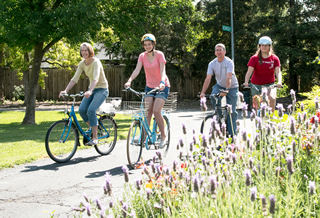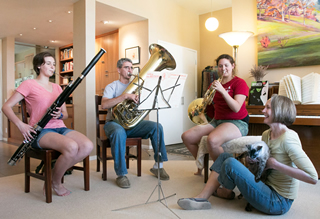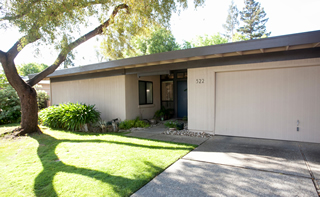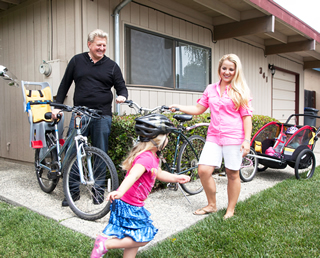Paths to Pleasure - Page 2
 |
 |
|
|
 |
|
|
 |
|
|
There are even sculptures—immense dominoes leaning together, a ceramic frog queen that's a memorial to a longtime environmental activist, three bronze dogs at play—one riding a tricycle.
Adding to the appeal of the paths is that they are part of a network that, while it doesn't provide pedestrian-and-bike-only paths throughout the town, does serve significant portions, especially areas built from the 1970s on.
And throughout this city of 65,000 people (plus another 6,000 living on campus), bike lanes and a bicycle loop ensure that Davis deserves its title of the Bicycle Capitol of America. The symbol of the city is a big-wheeled bicycle.
"We have more bicycling than any place in the U.S.," Handy says. "It's true." She cites census data showing that 15 to 20 percent of Davis workers commute via bike, versus one percent nationwide, and ten percent in Boulder, which may be runner-up bikers' heaven.
"Bicycling is the perfect mode for Davis, and Davis is the perfect place for bicycling," she says. "Given the size of the city, at most it's five miles from this end to that end, and downtown is no more than two or three miles from anybody. So that's a very reasonable biking distance, and of course it's perfectly flat."
And unlike, say, San Francisco, where bike-car and bike-pedestrian conflicts are common, and bike groups like Critical Mass sometimes take over streets entirely, "our bicyclists are pretty well behaved," Handy says.
And, George Flamik says, "Drivers are aware of bikers, because almost everybody bikes."
About 35 percent of kids in town bike to school, using a route that starts on the North Davis greenbelt and includes a pedestrian-bike bridge over Covell Boulevard—which means they never have to bike on or cross any streets.
But rather than boasting about that 35 percent figure, Handy wonders: "Well, shouldn't it be higher than that? Over half the kids are still driving or being driven to high school!?"
Handy and her husband both bike to campus, as do much of the faculty. Even the north winds that blow down Oak Avenue many spring afternoons don't deter her.
"I'll see her on a morning when it's so cold you don't even want to stick your nose out of doors, ride her bike to work," says Handy's neighbor, Karmen Streng.
Davis created the nation's first bike lanes in 1967, Handy says, spurred on by an academic family who, after a sabbatical in the Hague amidst a sea of bikes, concluded, "You know, Davis should be like the Netherlands." The president of UC Davis at the time promoted bike use big time, telling architects to "plan for a bicycle-riding, tree-lined campus," and urging students to bring bikes to campus "so you can get to classes on time."
Handy emphasizes that for bikes to take hold requires political commitment to pay for bike lanes, bike racks, and the like. When one city council in the mid-1960s hesitated to spend funds on bike infrastructure, the populace voted them out of office.




